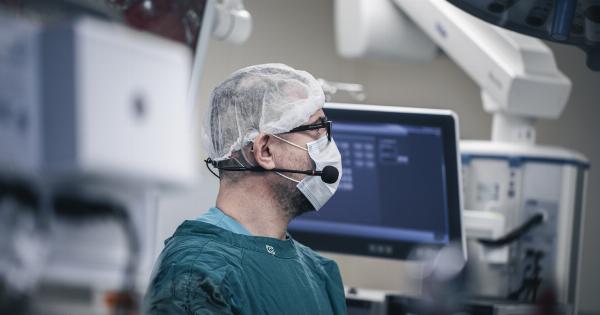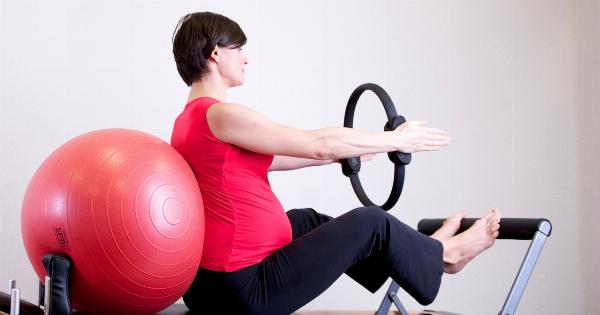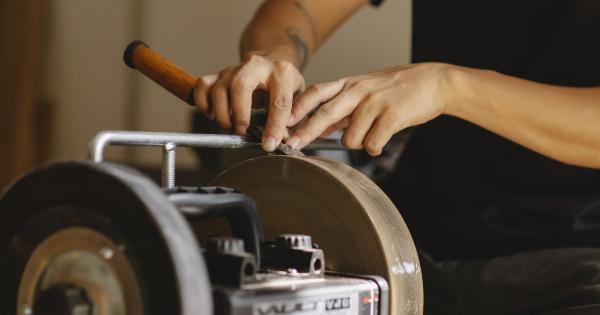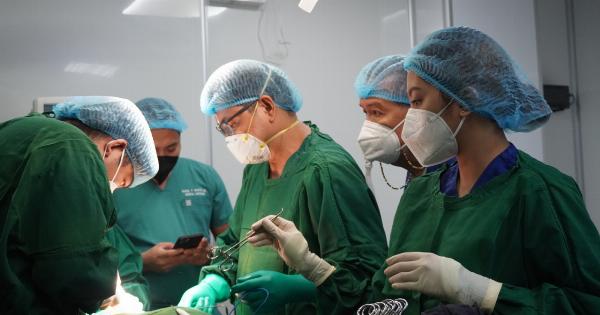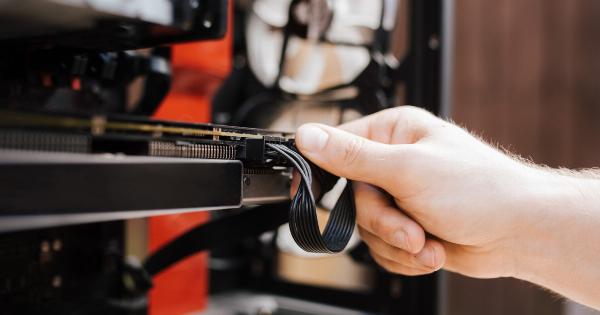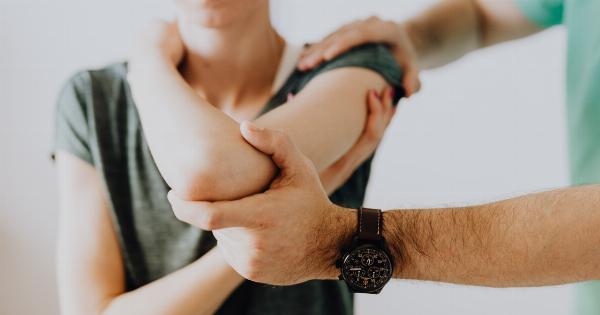A hernia refers to a medical condition that occurs when an internal organ or tissue protrudes through a weakened area of muscle or connective tissues. This condition can cause pain, discomfort, and other symptoms that interfere with daily activities.
Hernias can occur in various parts of the body, such as the abdomen, groin, diaphragm, or even the upper thigh area. There are different types of hernias, including inguinal hernias, hiatal hernias, umbilical hernias, and incisional hernias.
Causes of Hernias
Hernias typically occur due to a combination of muscle weakness and increased pressure on the affected area. Some common causes of hernias include:.
- Age: The risk of developing a hernia increases with age as the muscles and tissues weaken over time.
- Genetics: Certain individuals have a higher predisposition to hernias due to inherited weak abdominal walls.
- Improper lifting: Lifting heavy objects incorrectly or using improper lifting techniques can strain the muscles and lead to hernias.
- Obesity: Excessive weight puts additional pressure on the abdominal muscles, increasing the risk of hernias.
- Pregnancy: The pressure on the abdomen during pregnancy can cause hernias to develop.
- Chronic coughing: Conditions like chronic bronchitis, whooping cough, or repetitive strain from persistent coughing can contribute to hernia formation.
Symptoms of Hernias
The signs and symptoms of hernias may vary depending on the type and location of the hernia. Common symptoms include:.
- Visible bulge: A protrusion or bulge may appear under the skin where the hernia has occurred.
- Pain or discomfort: Hernias can cause varying degrees of discomfort, ranging from a dull ache to sharp pain.
- Feeling of heaviness: Some individuals with hernias experience a sensation of pressure or heaviness in the affected area.
- Weakness or pressure: Hernias can lead to weakness or pressure in the surrounding muscles.
- Indigestion or acid reflux: Hiatal hernias can cause symptoms like heartburn, indigestion, or acid reflux.
- Nausea and vomiting: In some cases, hernias can cause nausea and/or vomiting.
Preventing Hernias
While certain factors like genetics and age are beyond our control, there are steps we can take to reduce the risk of developing hernias:.
- Maintain a healthy weight: By adopting a balanced diet and engaging in regular exercise, you can manage your weight and reduce the strain on your muscles.
- Proper lifting techniques: When lifting heavy objects, bend your knees and use the strength of your legs rather than straining your back and abdominal muscles.
- Avoid smoking: Smoking can weaken the tissues and increase the likelihood of developing hernias.
- Manage chronic cough: If you experience chronic coughing, seek medical advice to address the underlying cause and minimize the strain on your muscles.
- Practice good posture: Maintain proper posture while sitting, standing, and lifting to reduce pressure on your abdominal muscles.
- Strengthen abdominal muscles: Engage in exercises that target the core muscles to enhance their strength and support.
Treatment Options for Hernias
If you suspect you have a hernia or have received a hernia diagnosis, it is essential to consult a healthcare professional.
Treatment options for hernias may vary based on factors such as the size of the hernia, symptoms experienced, and medical history.
Watchful waiting: In cases with small hernias that are not causing significant discomfort, your doctor may recommend a “wait and watch” approach.
Regular monitoring will be advised to ensure the hernia does not worsen over time.
Medications: While medications cannot repair hernias, they can help manage symptoms like pain, acid reflux, or indigestion associated with certain types of hernias, such as hiatal hernias.
Hernia trusses: A truss is a supportive undergarment designed to hold the herniated tissue in place. However, trusses are usually a temporary measure and not a long-term solution for hernias.
Hernia repair surgery: In cases where hernias cause severe pain, discomfort, or pose a risk of complications, surgical intervention may be necessary.
Surgery typically involves pushing the herniated tissue back into place and repairing or reinforcing the weakened muscle or tissue.
Laparoscopic Hernia Repair
Laparoscopic hernia repair is a minimally invasive surgical technique that has gained popularity in recent years.
During this procedure, small incisions are made, and a laparoscope (a thin, lighted tube with a camera) and specialized surgical tools are used to repair the hernia.
The benefits of laparoscopic hernia repair include:.
- Less postoperative pain
- Quicker recovery times compared to traditional open surgery
- Minimal scarring
- Reduced risk of infection
However, not all hernias are suitable for laparoscopic repair, and the surgeon will assess each case to determine the best approach.
Post-Hernia Surgery Care and Recovery
Recovering from hernia surgery is crucial to ensure proper healing and minimize the risk of complications. Here are some essential post-surgery care tips:.
- Follow postoperative instructions: Strictly adhere to the guidelines provided by your surgeon, including proper wound care, medication management, and activity restrictions.
- Avoid heavy lifting and strenuous activities: For several weeks after surgery, limit activities that may strain the surgical site.
- Gradually resume physical activities: Once your surgeon gives the green light, slowly reintroduce physical activities and exercises recommended for your recovery.
- Manage pain and discomfort: Take prescribed pain medication as directed and use ice packs or warm compresses to alleviate pain and swelling.
- Support the surgical area: Wearing abdominal binders or supportive undergarments can provide extra support and reduce discomfort.
- Attend follow-up appointments: Regularly visit your surgeon for postoperative check-ups to monitor your healing progress and ensure there are no complications.
When to Seek Medical Help
While some hernias may not cause immediate concern, certain symptoms warrant prompt medical attention. Seek medical help immediately if you experience the following:.
- Severe pain or sudden increase in pain at the hernia site
- Inability to move your bowels or pass gas
- Inability to reduce (push back) a hernia
- Nausea and vomiting
- Fever
- Redness, swelling, or drainage at the incision site after surgery
These symptoms may indicate complications of a hernia or postoperative issues that require urgent medical attention.
Conclusion
Hernias are a common medical condition that can cause discomfort and interfere with daily life. By understanding the causes, symptoms, and treatment options for hernias, individuals can take proactive measures to prevent their occurrence.
Simple lifestyle changes, such as maintaining a healthy weight, practicing proper lifting techniques, and managing chronic coughing, can significantly reduce the risk of developing hernias. In cases where surgical intervention is necessary, techniques like laparoscopic hernia repair offer minimally invasive options with quicker recovery times.
Remember to follow postoperative care instructions diligently and seek medical help if you experience severe pain, complications, or any concerning symptoms. By taking these preventive and treatment measures, individuals can effectively stop hernias in their tracks.





